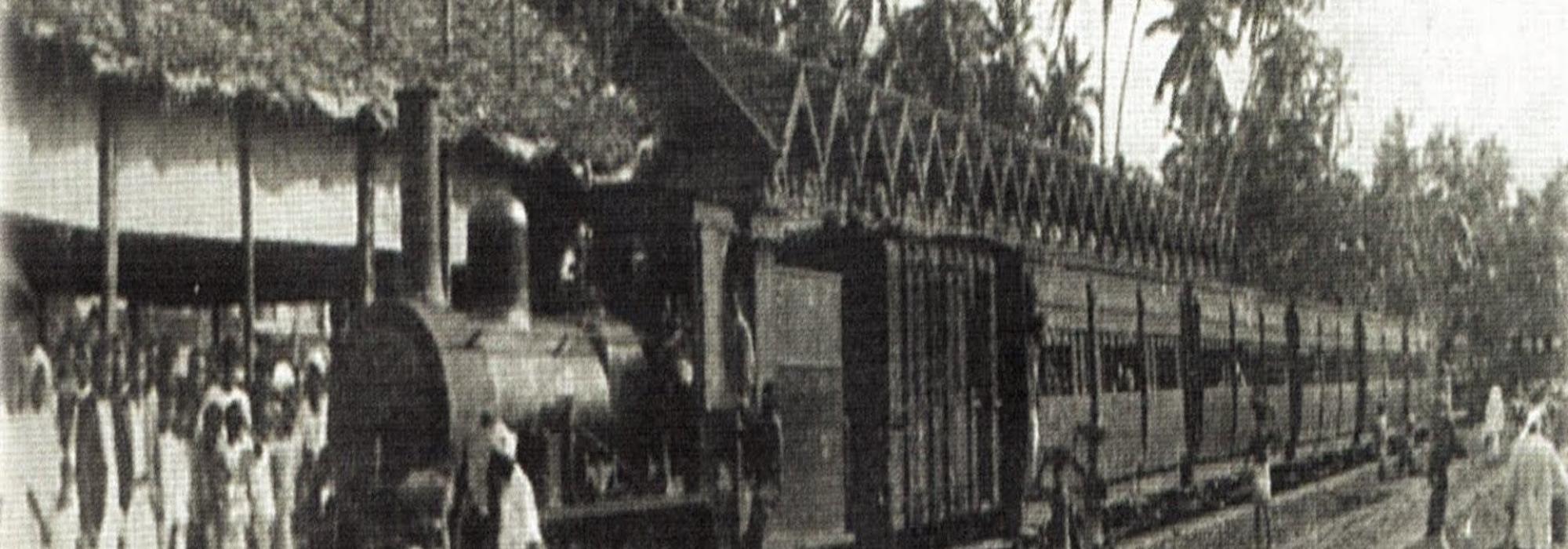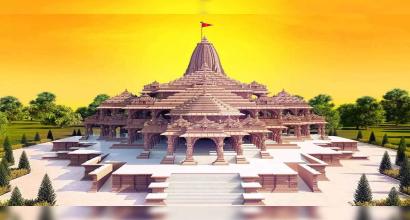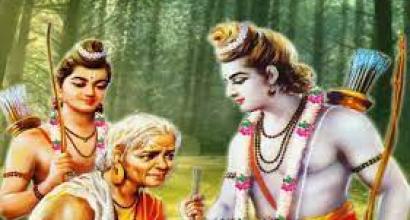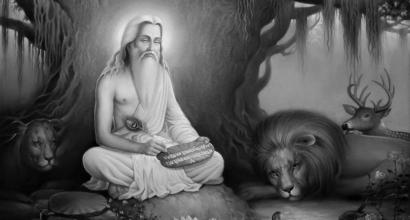K T Appanna encouraged us and supported us in many ways. After he set up his Hindu Restaurant at Ahmed Building, there was a vacant space available in Chikpet where he once ran the Hindu Coffee Club. In that place, we instituted the Sri Ramakrishna Seva Sangha and set up a reading room and library. That was around the time of Navaratri. I vividly remember the day when Krishna Iyer and I toiled to move the tables and benches. The reading room ran for about a year. The subscription fee collected wasn’t sufficient to take care of the expenses of rent and electricity. Just as he had done with the initial investment, it was Krishna Iyer who regularly shouldered the burden of additional expenses in order to break even.
Meanwhile, Krishna Iyer had to purchase the publishing house Irish Press and he had to move it to Gundopanth’s residential building in Siddikatte [today’s K R Market, Bangalore]. Attached to that building was an independent room facing the street. That room eventually became our workplace. There we established an institution called the Popular Education League. In addition to housing a library, it also regularly hosted weekly lectures and kāvya-vācanas (singing or recitation of classical poetry along with offering explanations). M G Varadacharya gave lectures there a handful of times.
This institution also undertook the work of distributing sweets and clothes at The Hospital for Leprosy and Terminally Ill Diseases on Magadi Road on the occasion of Dipavali. I’ve written about this in another section. This humanitarian service went on for about four to six years.
Another benign venture of the time was conducting a night-school at the temple conjoining the railway premises on Goodshed Road. This locality was largely inhabited by mill workers and other labourers. It was for their benefit that we had pledged for the setting up a night-school in Gokhale’s name. Appropriately, Hanumanthaiah became available to work as its teacher. He was zealous individual. He not only went on to pen a book called Kuruba Charitre but also ventured into a journalistic endeavour to uplift the (socially backward) Kuruba community (who comprised shepherds, milkmen, etc.). The night school turned out to be successful as a result of his enthusiasm and commitment. I remember him taking up the ownership of the school two to three years down the line and subsequently handing it over to the government. Our league was around for four or five years and later followed the footsteps of its ancestors.
Yet another effort that has remained in my memory is the literature study group called Bangalore Study Club. It operated from was Krishna Iyer’s Irish Press. Associate members would meet up on one of the evenings each month. Food, discourse, and discussion – these were its agenda. C S Anantapadmanabha Iyer and Dr. K Kunhi Kannan were two of the most memorable members of the club back in the day.
Anantapadmanabha Iyer was the brother of Balasundaram Iyer who had been a Municipal Councillor. He was capable of delivering interesting and insightful discourses. He was an enthusiast of literature and an epitome of sattva. Anantapadmanabha Iyer was a high school teacher who was respected and revered for his teaching ability and motherly affection towards his students. He easily moved around with his students and shared an affectionate rapport but was uncompromising in matters of discipline.
Dr. Kunhi Kannan was an expert entomologist at the department of agriculture. He would sign his name with the initials ‘K. K. K.’ We interpreted it as ಕ್ರಿಮಿಕೀಟಕಾಲಾಂತಕ (Krimi-Kīṭa-Kālāntaka) – Killer of germs and insects. He was a thoughtful man and endowed with the nature of sattva. He had gained exposure to a wide range of literature. He was an independent thinker. He could eloquently speak and write in English. He had travelled to many countries and wrote a book called East and West – a work that reviews the eastern and the western civilizations. He was someone who we all loved and respected.
What comes first in our study group meetings – Food or Discourse? This was a topic for debate during one such meeting. We had to go with food since it drew a majority of votes. There was abundant food for lunch following which the members of the club relished their tāmbūla (betel leaf with betel nut and other savouries) by leaning over the walls and pillars. Discourses were scheduled to take place in such an atmosphere. Once, our beloved and esteemed friend, who was also a great scholar, N Narasimha Murthy had written a paper titled Grotius: Father of International Law. We desired that he read out his paper in one of our club meetings and were successful in convincing him to do so. As always, food was first on the agenda that evening. Onion and vegetable sambar, papad, and crackers had been prepared really well. The discourse began after our meal. Fifteen minutes into the lecture, four to five members were lost in sound sleep. Four to five others were drowsy and yawning. It was only four to five of the remaining members who were awake and listening to the lecture. Isn’t this a great consolation to the speaker? It was only people like our M G Varadacharya, aficionados of humour, who were successful in keeping sleep at bay amidst our food-centred conferences. But then, those laughter-filled discourses aided our digestion better than they aided our learning. This association too didn’t go on for much longer.
At around the same time, a few people got together to start the Book Club. C S Balasundaram Iyer was its forerunner. A majority of its members were government officials. Dr. Kunhi Kannan was a part of it. Since most of the members were friends of mine, I got an opportunity to be a part of the events. This club too hardly went on for a year or two.
Most of the aforementioned institutions—except for one or two—didn’t fall under the domain of politics. One of the organisations that should have been mentioned earlier is the City Council (ನಗರ ಸಭೆ). This organisation belonged to a subdivision of Mysore State known as the City Division. Shimoga, Kadur, and Hassan districts were a part of this division. It primarily included Malenadu region. I don’t have extensive knowledge about the City Council but I’ve heard about it and have also seen it being mentioned in the reports of the Citizens Representative Assembly. Two or three members of the Citizens Representative Assembly were elected members of this City Council. It had its headquarters in Shimoga. Srinivasa Rao and Vasudeva Rao—both coffee planters from Chikmagalur—and also C Subba Rao, Balakrishna Rao, and Shankaranarayana Rao from Shimoga were city representatives who spoke in the assembly. This is from bygone era, circa 1907-08. I’m unaware about what happened to the Council later. I assume that it must have met a similar fate as that of Mysore Public Council.
Though there weren’t any structured associations during times of Sir K Sheshadri Iyer, there were frequent protests by the people. Upon demise of Chamarajendra Wadiyar X [in 1894], a few questions like “Should ‘Regency’ be deployed within the State?” “Should there be any other system in place instead?” “Can Sheshadri Iyer be appointed to the position of regent?” stirred the minds of people. Quite a few well-attended public congregations took place at the time in both Mysore and Bangalore in an attempt to provide a robust shape to public opinion. D Venkataramayya played a critical role in congregations of Bangalore. As per the request of these congregations, the Queen of Mysore was appointed as the Regent by the Government of India.
Once during the time of Navaratri, the government enforced a reform which caused inconveniences to traders around Mandi Mohalla region of Mysore. Since the streets of Mandi Pete were congested and also because it was the time when there was a high risk of contagious disease like Cholera and Plague, (it appears that) the government had mandated carts that came from smaller towns and villages to be parked quite some distance away. Though the intention of this mandate seems commendable, it appears that the lower rank officials responsible for implementing this rule dealt despicably with the traders while doing so. This caused inconvenience and irked the traders. (Perhaps) the person responsible for implementing the government’s rule, the then assistant commissioner, T Ananda Rao also had a hand in it. In an attempt to teach a lesson to the government, all the traders got together and pulled down shutters of their stores during Navaratri that year. This protest was bound to catch the notice of Diwan K Seshadri Iyer. He sent suitable arbitrators to pacify the traders and ensured that they restored their business to normal.
Even during the time of a fire mishap at the old palace, public voice gained a potent shape through social meetings. Seshadri Iyer obeyed the decision and set up a committee to enquire the circumstances surrounding this unfortunate incident. P N Krishnamurthy (the incoming Diwan), Chief Engineer Col. Towen, S M Frazer, and the leader Devaraj Urs were its members. I remember that this committee, after a thorough investigation, somehow ruled out malice or any other foul play as the motive behind the fire and identified its possible cause to be an accidental spark from a lamp that wasn’t put off due to forgetfulness of a low-rank employee.
There were also local protests from the general public during the time of the plague epidemic when the government had issued orders to vacate homes and the administering of vaccination. The reason for recollecting these disputes is to illustrate how the minds of people from the yesteryear had aroused and taken on a courageous form (during uncommon situations). Although their thoughts weren’t politically structured, they were well assimilated for a political revolution.
This is the second part of a four-part English translation of the seventeenth chapter of D V Gundappa’s Jnapakachitrashaale (Volume 1) – Sahiti Sajjana Sarvajanikaru. DVG wrote this series in the early 1950s. Thanks to Śatāvadhāni Dr. R Ganesh for his review. Edited by Hari Ravikumar.




































